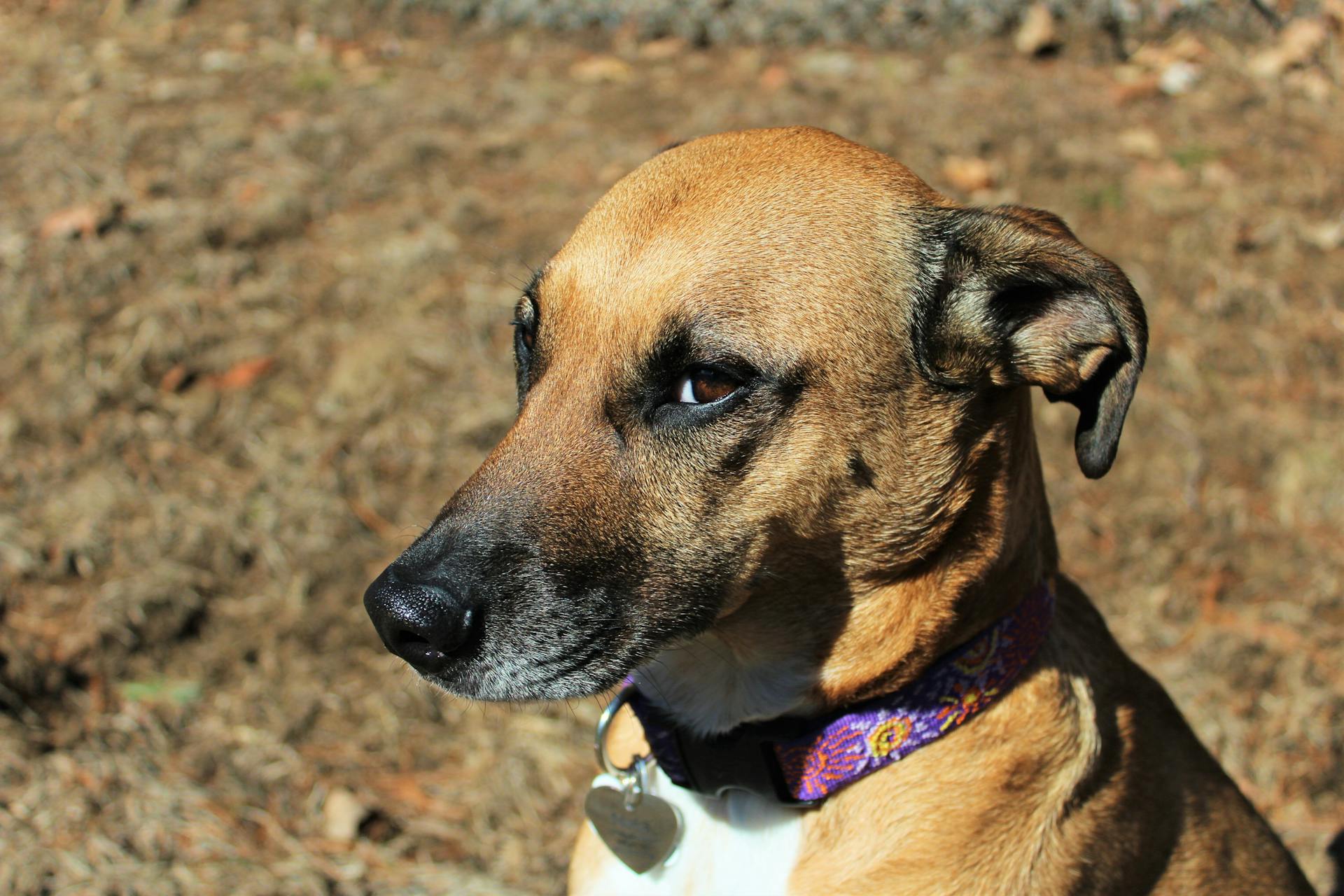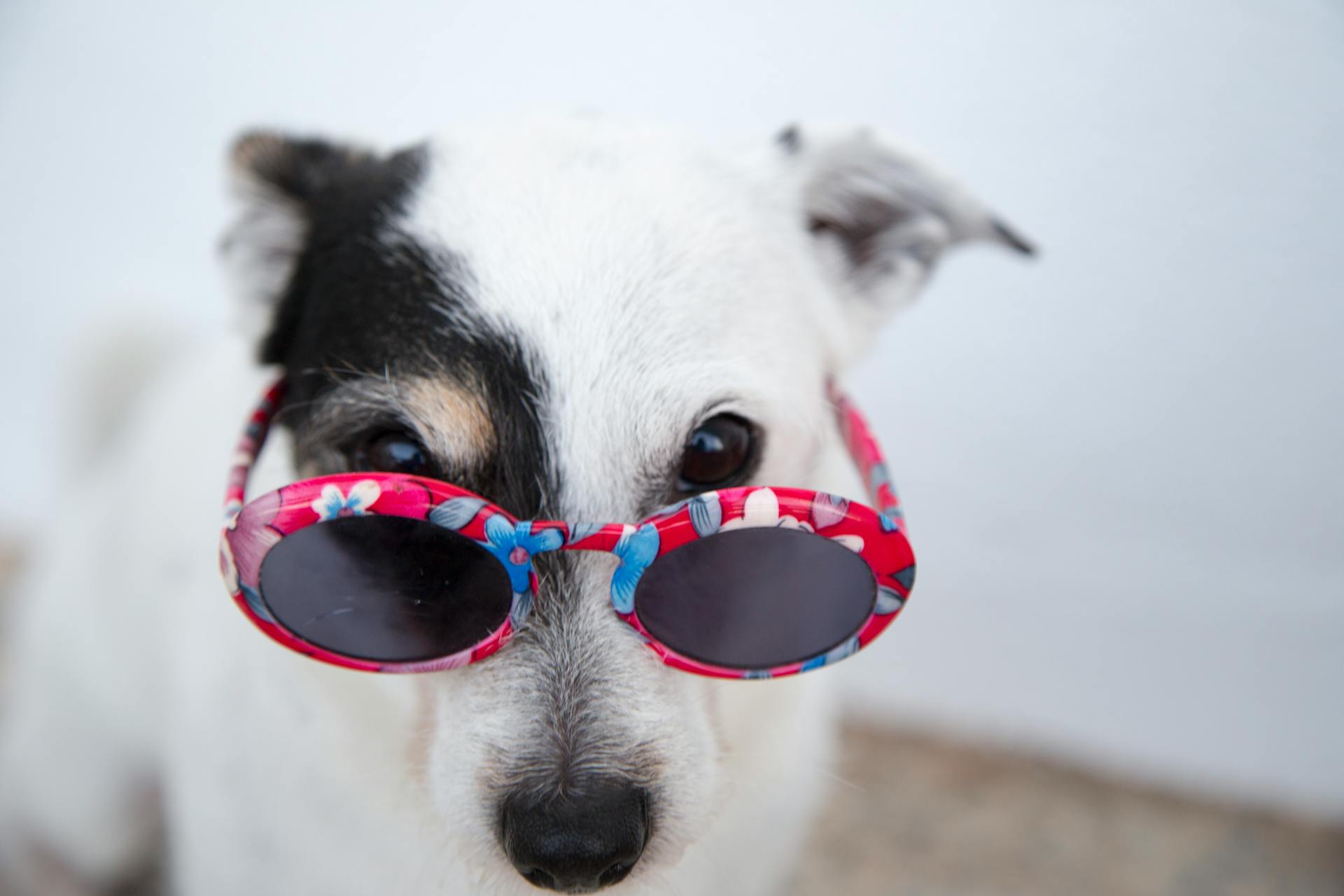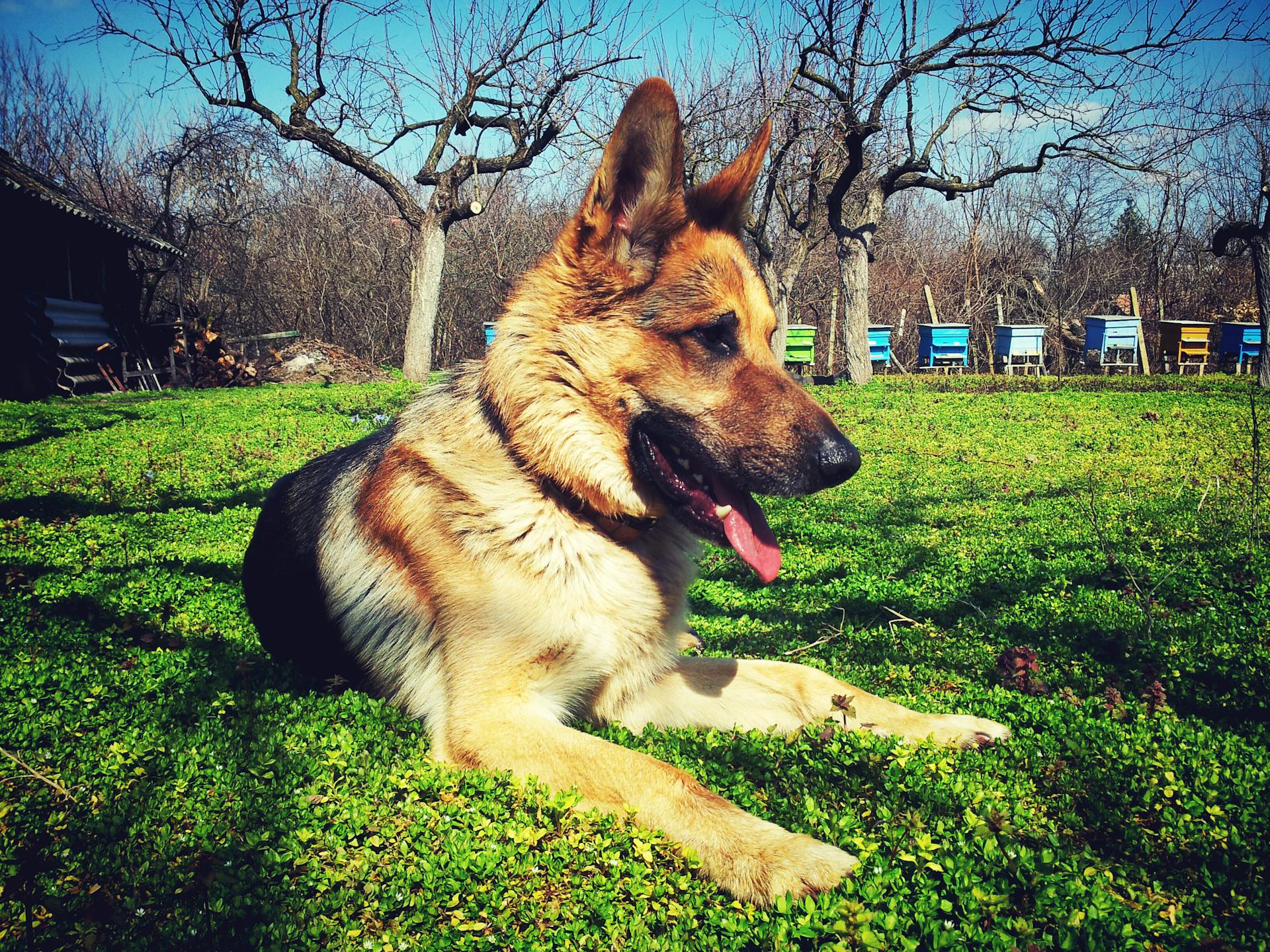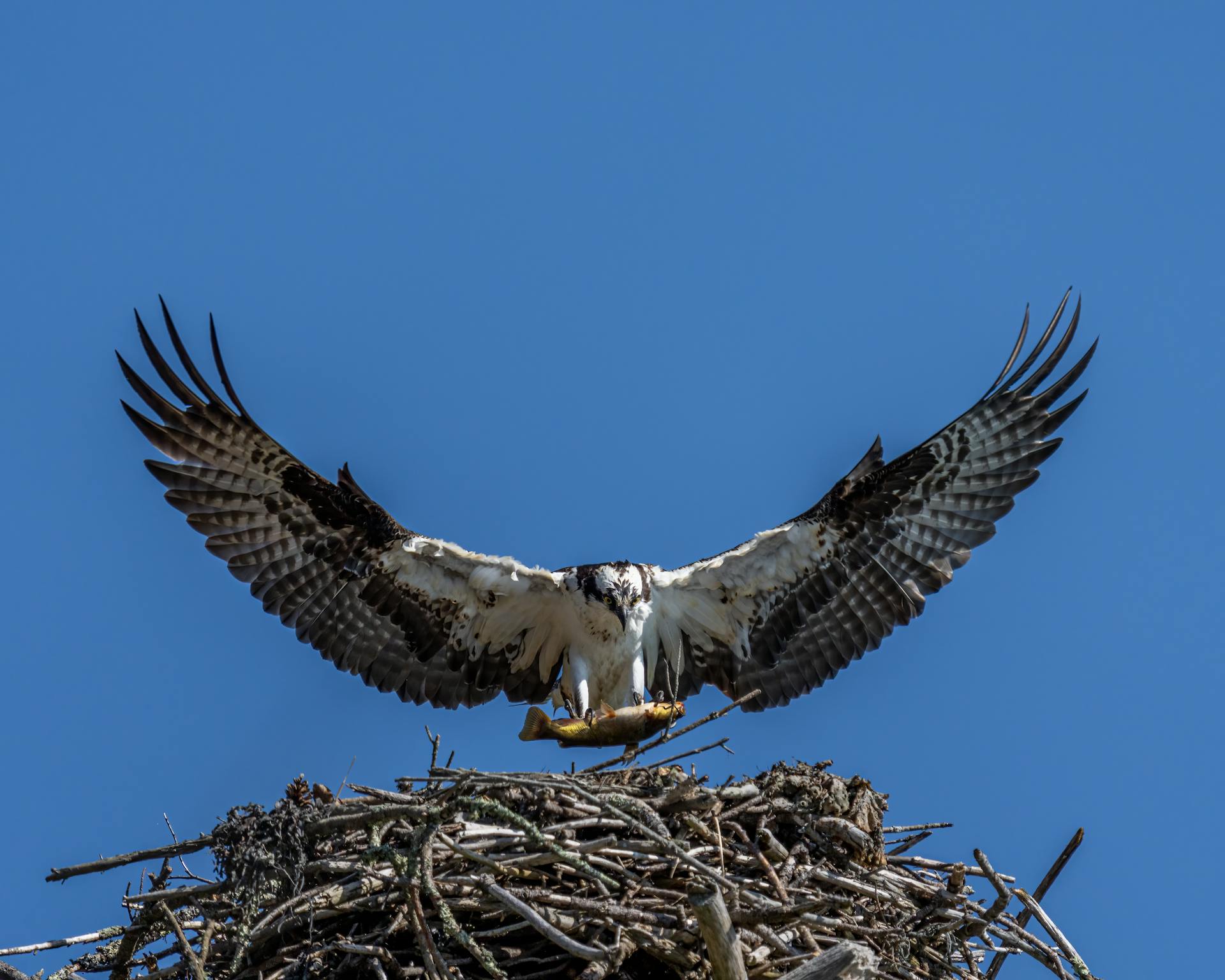
It's a common scenario where a dog eats a bunny, and it's essential to understand the consequences of this action.
Dogs can get sick from eating bunnies, especially if the bunny has a disease like tularemia.
The symptoms of tularemia in dogs can be severe and may include fever, swollen lymph nodes, and pneumonia.
If your dog eats a bunny, it's crucial to monitor its behavior and health closely for any signs of illness.
What to Do If My Pet Eats a Rabbit
If your pet eats a rabbit, contact your regular veterinarian for guidance on your next steps. This is especially important if your pet is not on a heartworm, flea, and tick prevention plan, as you'll want to have an intestinal parasite screening performed.
Your vet will likely want to know the details of the situation, including when it occurred, what species of animal was eaten, how much your pet ate, and if your pet is exhibiting any signs of illness. They might also ask you to bring in your pet for testing or to keep them at home and monitor them for signs of illness, such as diarrhea, vomiting, loss of appetite, lethargy, and loss of coordination.
If your pet isn't on a heartworm, flea, and tick prevention plan, an intestinal parasite screening is crucial to screen for coccidia and roundworms. Since infection won't be immediately apparent, ask your veterinarian when to bring in a sample.
If your pet is demonstrating any of these signs, keep your veterinarian informed and seek advice on how to proceed. If you need to speak with a vet but can't get to one, consider using an online service like PangoVet, where you can talk to a vet online and get personalized advice at an affordable price.
Here are some key signs to watch out for if your pet has eaten a rabbit:
- Diarrhea
- Vomiting
- Loss of appetite
- Lethargy
- Loss of coordination
Preventing Pets from Eating Dead Animals
Training is key to preventing your dog from eating dead animals. Teach your dog to leave objects alone when requested.
Supervision is essential, especially for sporting breeds like retrievers and spaniels who instinctively want to carry and deliver small mammals. They may still indulge in a smelly snack when left unattended.
Explore further: Food Alternatives for Dogs
Ensure your pet is current on their rabies vaccination. This is a crucial step in preventing the spread of diseases.
Use a standard leash to help you supervise your dog and identify potential hazards on your path. Avoid retractable leashes that can give your dog too much freedom.
Check the area before allowing your pet to roam freely. Look for dead animals, remains, or excrement that may attract your dog's attention.
Consider using a basket muzzle during outdoor excursions if your dog has a tendency to eat indiscriminately. This will allow your dog to pant, drink, and accept treats, but stop them from picking things up off the ground.
Here are some additional tips to keep in mind:
- Remove rat or mouse traps from your home, garage, and property to prevent secondary poisoning.
- Be aware of your surroundings and keep an eye out for potential hazards on your path.
Rabbit Health Concerns
If your dog has eaten a rabbit, they may become ill due to a sudden change in their diet. Domestic canines are used to having a specific diet formulated to meet their nutritional needs.
A rabbit is essentially raw food with fur and bones, which can be difficult for dogs to digest if they're not accustomed to eating it. This can lead to a range of health issues.
You should look out for signs of illness, such as vomiting, diarrhea, or lethargy, if your dog has eaten a rabbit. These symptoms can indicate that their digestive system is struggling to process the new food.
Dogs and Tularemia
Dogs can get tularemia, although it's not common. The disease is usually seen in the summer months when tick and deer fly populations are high.
Tularemia can be transmitted to dogs through various means, including ingesting infected animals like rabbits or rodents. This is a risk during rabbit hunting season.
Dogs can also get tularemia by consuming contaminated water or food, or by being bitten by an infected insect like a flea, tick, or mosquito. Skin to skin contact with an infected animal can also transmit the disease.
Inhalation of aerosolized bacteria is another way dogs can get tularemia. This can happen when dogs breathe in the bacteria that are in the air.
Here are some common ways dogs can get tularemia:
- Ingesting an infected animal
- Consuming contaminated water or food
- Being bitten by an infected insect
- Skin to skin contact with an infected animal
- Inhalation of aerosolized bacteria
Why Are Dogs and Cats Attracted?
Dogs and cats have an impressive sense of smell that can detect odor and decay from a great distance.
They don't classify smells as good, bad, or embarrassing, but rather as information about the world, which is why they're often attracted to and delighted by putrid smells.
Their motivation for eating animal remains is likely a combination of novelty, hunger, and opportunistic scavenging.
Dogs and cats may also roll on or near the odor source to claim the spoils as their territory or to camouflage their own scent and improve hunting success.
Their instinctual desire to claim the spoils as their territory can be a strong motivator for eating dead animals.
Intriguing read: Do Fisher Cats Attack Dogs
Key Takeaways
Dogs will be dogs, and sometimes they'll get into mischief, like eating a live rabbit. If this happens to you, it's essential to monitor your dog's behavior closely.

If your dog has eaten a rabbit, look out for signs of worms or other parasites, such as lethargy, changes in eating or drinking habits, or abnormal poops.
Consult your veterinarian for advice on how to deal with the situation. They can offer the best guidance and treatment if necessary.
Supervising your dog, especially in areas where small animals are likely to be found, can help prevent such incidents.
Animal fur can aid your dog's digestion, and dog chews with the hide still intact can be a great alternative to let your dog enjoy the benefits without hunting small animals.
Here are some key takeaways to keep in mind:
- Nature’s Call: Supervise your dog in areas where small animals are likely to be found.
- Safety First: Monitor your dog's behavior for signs of worms or other parasites.
- Vet’s Wisdom: Consult your veterinarian for advice on how to deal with the situation.
- Fur Benefits: Consider dog chews with the hide still intact as a safe alternative for your dog.
Frequently Asked Questions
Can a dog digest rabbit bones?
Dogs can technically digest rabbit bones, but vomiting is a potential sign of an obstruction, so monitor your pet's comfort level closely
Sources
- https://wearwagrepeat.com/dog-eating-rabbit/
- https://urgentvet.com/my-pet-ate-a-dead-animal-what-should-i-do/
- https://www.mooresvilleanimalhospital.com/site/blog/2020/08/31/tularemia-rabbit-fever-in-dogs
- https://www.dogster.com/dog-health-care/dog-ate-a-rabbit
- https://www.mumsnet.com/talk/the_doghouse/1777950-Help-My-dog-just-ate-a-baby-rabbit
Featured Images: pexels.com


